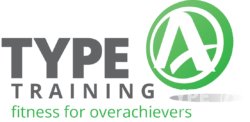If you’re just getting into strength training, chances are you’ve stumbled across Starting Strength and StrongLifts 5×5. Both programs revolve around classic compound lifts—think squats, deadlifts, and presses. No wonder they’re so popular—they actually deliver results.

The big difference? It’s the volume. Starting Strength sticks to 3 sets of 5 reps (3×5), but StrongLifts bumps it up to 5 sets of 5 (5×5), so you’re looking at roughly 67% more work with StrongLifts.
That extra volume in StrongLifts might be better for muscle growth. On the flip side, Starting Strength’s lower volume could let you increase the weight faster before you hit a wall.
Popular posts:
There’s also a difference in exercise choice. Starting Strength throws in power cleans, which can be tough to learn. StrongLifts swaps those for barbell rows.
Your background and goals matter here. Starting Strength might suit absolute beginners, while StrongLifts is a solid pick if you’re up for more volume or want a bit more muscle focus.
Key Takeaways
- Starting Strength uses 3×5 rep schemes, while StrongLifts goes for 5×5, so you get a big difference in training volume and how fast you can add weight.
- StrongLifts might help you build more muscle with its higher volume, but Starting Strength could let you progress faster in strength—at least before you plateau.
- Your experience and goals should guide your pick. Both programs are solid for building strength from the ground up.
Overview of Starting Strength and StrongLifts 5×5

Starting Strength and StrongLifts 5×5 are both big names in beginner strength training. They focus on compound lifts to build a real base of strength. Each uses progressive overload, but their approach to sets, reps, and exercise selection isn’t quite the same.
History and Origins
Mark Rippetoe, a former competitive powerlifter and gym owner, created Starting Strength in the early 2000s. He laid out the details in his
Mehdi Hadim launched StrongLifts 5×5 online in 2007. He based it on older 5×5 routines, especially those from Reg Park in the 1960s and Bill Starr in the 1970s.
Starting Strength spread through Rippetoe’s books, seminars, and certifications. StrongLifts gained traction with its easy-to-use website and mobile app, making it super approachable for beginners.
Core Training Philosophies
Both programs are all about compound movements that hit several muscle groups at once. The main idea is progressive overload—just keep adding weight as you get stronger.
Starting Strength relies on a 3×5 protocol (three sets of five reps) for most lifts. The program’s main exercises:
- Squat
- Bench Press
- Deadlift
- Overhead Press
- Power Clean
StrongLifts uses a 5×5 approach (five sets of five), so you get more volume. Its core lifts:
- Squat
- Bench Press
- Deadlift
- Overhead Press
- Barbell Row
The main philosophical split is volume. Starting Strength’s lower volume helps you recover quicker. StrongLifts’ higher volume gives you more practice with each lift.
Both have you train three times a week, alternating workouts so you can push yourself but still get enough rest.
Workout Structure and Rep Schemes
Starting Strength and StrongLifts 5×5 both stick to compound lifts, but their takes on volume and progression are a bit different. They share the main lifts, but the set/rep schemes, weekly layout, and plateau fixes set them apart.
Weekly Workout Layout
Starting Strength uses an A/B format with three workouts per week. Workout A is squats, bench press, and deadlifts. Workout B swaps in overhead press and power cleans. You alternate, so over two weeks you’ll do A-B-A, then B-A-B.
StrongLifts also runs an A/B split with three weekly sessions. Workout A is squats, bench press, and barbell rows. Workout B is squats, overhead press, and deadlifts. The pattern alternates every session.
Both programs have you squatting every workout, which really pushes lower body growth. Each session usually takes 45-60 minutes, with enough rest between sets to catch your breath.
Working Sets and Volume
The biggest difference is volume. Starting Strength uses 3 sets of 5 reps (3×5) for most lifts. Deadlifts are the odd one out—just 1 set of 5, since they’re so taxing.
StrongLifts goes for 5 sets of 5 reps (5×5) for everything except deadlifts, which still get 1×5. More sets mean more muscle stimulus, at least in theory.
Both have you use the same weight for all working sets. You’ll do warm-ups with lighter weights first. Rest 3-5 minutes between sets—don’t rush it if you want to get stronger.
Progression and Deload Strategies
Both use linear progression, but the specifics differ. In Starting Strength, add 5-10 pounds to squats and deadlifts each time, and 2.5-5 pounds to upper body lifts.
StrongLifts says add 5 pounds to every lift each session (2.5 for upper body). The StrongLifts app helps you keep track.
If you stall out (can’t hit all your reps), here’s what to do:
- Starting Strength: Drop the weight by 10% and build back up.
- StrongLifts: After failing three sessions at the same weight, cut it by 10-20% and start climbing again.
Neither program schedules deloads, but both suggest taking one if you’re stuck for a while or just feeling wiped out.
Exercise Selection and Technique
Both Starting Strength and StrongLifts 5×5 stick to the basics: big barbell lifts for total-body strength. They do differ a bit in which exercises they choose and how they teach good technique.
Compound Movements in Each Program
Starting Strength’s five main moves are: squat, bench press, deadlift, overhead press, and power clean. Technique matters a lot here, and you’ll squat every session—it’s the backbone of the plan.
StrongLifts 5×5 swaps power cleans for barbell rows. You’ll still squat every time. The program alternates between two templates (A and B), each with three exercises.
Both focus only on compound lifts that hit several muscle groups at once. These heavy moves are way more efficient for strength than isolation stuff, at least for beginners.
Accessory Work and Variations
Starting Strength barely touches accessory work. You’re supposed to nail the main lifts first. As you get more advanced, you might add chin-ups or back extensions. The program dives deep into the how and why of lifting, really focusing on form and mechanics.
StrongLifts is similar but gives you the option for a few accessories with some structure—think dips, chin-ups, or core work, but only after the main lifts.
Neither recommends a bunch of extra exercises for beginners. The idea is to get really good at the main barbell lifts. Both believe mastering these compound moves is what actually drives your strength up.
Strength and Muscle Gains Comparison
Both Starting Strength and StrongLifts 5×5 can deliver solid results in strength and muscle, but they take slightly different roads to get there. Volume, frequency, and exercise picks all play a role in how you progress.
Strength Development and 1RM Improvements
Starting Strength’s 3×5 approach relies on higher intensity with lower volume. This program puts strength gains over muscle mass, so you can usually handle heavier weights sooner.
The power clean in Starting Strength adds an explosive lift that helps build overall power. Some lifters see bigger 1RM improvements in certain lifts because of this element.
StrongLifts 5×5 brings 67% more volume, using five sets instead of three. This extra work can lead to better endurance and strength over time, though you might notice slower progress at first because of the added fatigue.
Both programs use progressive overload by adding 5 pounds each session. Your 1RM usually climbs 2-3× faster during these novice plans compared to intermediate routines.
Muscle Mass and Hypertrophy
Starting Strength tends to build dense, functional muscle with its lower rep scheme. The program gives enough stimulus for hypertrophy but keeps time under tension short.
Compound movements here push overall muscle growth, especially in your posterior chain thanks to all the squats and deadlifts.
StrongLifts 5×5 might have a slight edge for muscle building because of the higher volume. More sets mean extra metabolic stress and muscle damage—both important for hypertrophy.
Both programs will nudge your body composition toward more lean muscle and possibly less body fat, especially if you eat right.
Newbie Gains for Novice Lifters
If you’re new, either program will bring dramatic results. Untrained muscles react fast to the heavy compound lifts.
Starting Strength feels less fatiguing for beginners, so you might bump your weights up quicker in the first few weeks.
StrongLifts gives you more practice with each movement pattern thanks to higher volume. This can help beginners nail their technique.
Recovery is a factor—some adapt better to Starting Strength’s lower volume, while others do fine with the extra work in StrongLifts. Pay attention to how you feel and adjust as needed.
Ease of Use and Practical Considerations
Starting Strength and StrongLifts take different routes when it comes to fitting into your routine. These differences can affect how easily you stick with the plan.
Workout Frequency and Rest Days
Starting Strength runs on a three-day-per-week schedule with rest days in between. You’ll usually train Monday, Wednesday, and Friday, giving you 48 hours to recover between sessions.
This 3×5 rep scheme means less volume than StrongLifts, so recovery can feel easier.
StrongLifts also uses three days a week, but you do five sets instead of three. Expect to spend about 40% more time in the gym.
Both programs alternate between two templates (A and B), making sure you hit all the big muscle groups more than once a week. The built-in rest days matter even more as weights get heavy.
For beginners, either schedule works. Your choice might come down to how much time you have and how well you bounce back from lifting.
Equipment and Home Gym Suitability
Both programs are minimalist when it comes to gear. You’ll need:
- Squat rack or power rack
- Barbell and weight plates
- Bench (preferably adjustable)
- Space for deadlifts
If you’re building a home gym, either program fits with basic equipment. The StrongLifts program uses barbell rows instead of power cleans, which might be easier if you’re short on space.
Starting Strength includes power cleans, which take more skill and a bit more room to do safely. Bumper plates help if you need to drop the bar.
If you’re on a budget, it’s nice that both programs focus on compound lifts using the same gear. You don’t need fancy machines or a pile of dumbbells.
Program Adaptability and Progression Beyond the Novice Stage
Starting Strength and StrongLifts 5×5 are built for beginners, but their paths diverge as you get stronger. It’s worth knowing how each adapts once you’re past the newbie phase.
Intermediate Progression Pathways
Starting Strength transitions into intermediate programming with its Texas Method variant. You keep the main lifts but change up volume and intensity through the week.
Usually, you do volume work (5×5) Monday, recovery Wednesday, and a heavy single set Friday.
StrongLifts offers Madcow 5×5 as its next step. This one uses weekly progression instead of session-to-session jumps you see in the novice program.
Your rep goals stay similar but the loading pattern changes a lot.
Intermediate programs bring more variety in intensity during the week. You’ll need to track your training maxes more closely, and recovery gets trickier as the weights climb.
Transitioning to Advanced Programs
When intermediate plans stop working, Jim Wendler’s 5/3/1 often becomes the next step. 5/3/1 uses percentage-based training with monthly progression, not weekly or daily jumps.
Moving on from Starting Strength can feel more natural since it’s lower volume. StrongLifts users may need to get used to less overall work when switching to something like 5/3/1.
Advanced programming asks you to:
- Calculate training maxes (usually 85-90% of true max)
- Follow more complex periodization
- Add specialized assistance work
- Manage fatigue more carefully
Your time with either novice plan gives you a solid base in form and progressive overload that translates well to advanced programs.
Injury Risk and Safety Considerations
Both Starting Strength and StrongLifts focus on compound lifts with heavy weights, so good technique and safety matter a lot. Training smart builds confidence and keeps injuries at bay.
Common Injuries and Prevention
The most common injuries in programs like Starting Strength and StrongLifts hit the lower back, shoulders, and knees. For lower back safety, keep a neutral spine during squats and deadlifts.
Shoulder injuries usually happen from sloppy bench press form. Retract your shoulders and pick a grip that feels right for your frame.
Knee pain often comes from poor squat depth or knees caving in. Make sure your knees go over your toes, not inward.
Injury prevention basics:
- Warm up well before heavy sets
- Good warm-ups lower injury risk
- Use lighter weights to learn form
- Add weight slowly—5-10 pounds each session
- Rest 2-3 minutes between heavy sets
- Take deload weeks when you need them
Proper Form and Coaching Resources
Learning good technique is a must for both StrongLifts and Starting Strength. The Starting Strength
It’s worth considering a few sessions with a coach who knows these programs. That up-front investment can save you years of nagging injuries.
Free coaching resources:
- YouTube channels (Starting Strength, Alan Thrall, Brian Alsruhe)
- Program-specific forums and subreddits
- Form check videos—post your lifts for feedback
Working with lighter weights at first helps you nail your form. Good form matters more than heavy weights when you’re new. Your confidence will grow as your technique gets better.
Suitability for Different Types of Lifters
Starting Strength and StrongLifts 5×5 serve different lifters depending on your background and goals. Your experience, preferences, and what you want to achieve will help you pick the better fit.
Bodyweight Exercises and Individualization
Starting Strength sticks mainly to barbell lifts and doesn’t focus much on bodyweight moves. This program is meant to get you off the plan once you’ve built a strength base, so it’s a good choice if you want fast progress.
StrongLifts is a bit more flexible, letting you add accessories and bodyweight moves. You can throw in chin-ups, dips, or planks after the main lifts for more variety.
Neither plan puts a big spotlight on bodyweight training. If that’s your thing, you might want to tweak the programs or look for one that blends free weights and bodyweight stuff more evenly.
Goals and Personal Preferences
Your fitness goals should really steer your program choice. Starting Strength uses a 3×5 rep scheme.
This lower volume can work well if you care most about building raw strength. The program moves fast, so it’s a good pick if you want to see strength gains without a lot of fluff.
StrongLifts takes a different route with a 5×5 approach with higher volume. That extra volume can help with muscle growth while still boosting strength.
If you want both size and strength, StrongLifts might fit better. But what about recovery?
Recovery capacity matters a lot. If you’re older or just don’t bounce back quickly, Starting Strength’s lower training volume gives you more breathing room between sessions.
Younger lifters or anyone with solid recovery might actually enjoy the extra work in StrongLifts. It really depends on what your body can handle and what you want out of your training.
Summary and Final Thoughts
Both Starting Strength and StrongLifts 5×5 work well for beginners who want to get stronger. Picking one really depends on what you want and what keeps you motivated.
Key Differences:
- Starting Strength sticks to 3×5 reps, while StrongLifts goes with 5×5 (except for deadlifts).
- Starting Strength is less fatiguing, so you might be able to progress longer without burning out.
- StrongLifts uses rows, but Starting Strength brings in power cleans and chin-ups later on.
If you want something super simple, StrongLifts is probably the easier pick. The app makes it even more straightforward.
If you’re curious about learning more technical lifts and maybe have a coach nearby, Starting Strength could be the better fit.
Think about your schedule, how quickly you recover, and honestly, which exercises you actually like. That stuff matters way more than people admit.
Try one program for 8-12 weeks. If it’s not working, just switch. Most beginners see good strength gains on either program in the first few months anyway.
Whatever you pick, focus on decent form, eating enough, and getting enough rest. That’s what really makes a difference over time.














